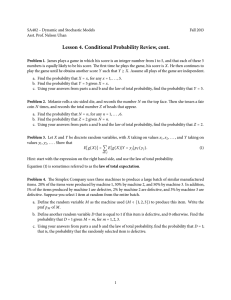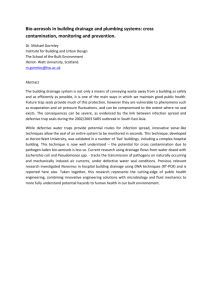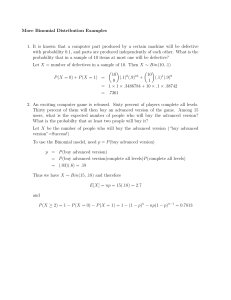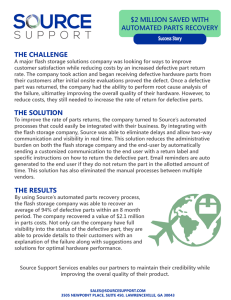Solutions to Quiz # 1 (STA 4032)
advertisement
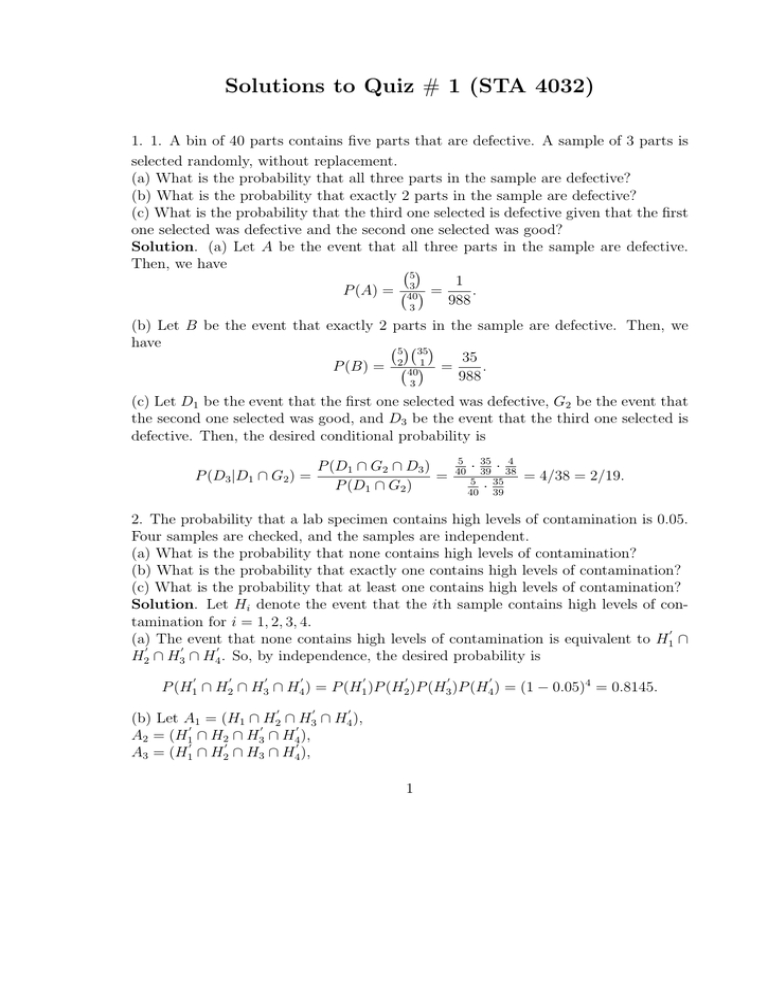
Solutions to Quiz # 1 (STA 4032) 1. 1. A bin of 40 parts contains five parts that are defective. A sample of 3 parts is selected randomly, without replacement. (a) What is the probability that all three parts in the sample are defective? (b) What is the probability that exactly 2 parts in the sample are defective? (c) What is the probability that the third one selected is defective given that the first one selected was defective and the second one selected was good? Solution. (a) Let A be the event that all three parts in the sample are defective. Then, we have 5 1 3 = . P (A) = 40 988 3 (b) Let B be the event that exactly 2 parts in the sample are defective. Then, we have 5 35 35 P (B) = 2 401 = . 988 3 (c) Let D1 be the event that the first one selected was defective, G2 be the event that the second one selected was good, and D3 be the event that the third one selected is defective. Then, the desired conditional probability is P (D1 ∩ G2 ∩ D3 ) = P (D1 ∩ G2 ) P (D3 |D1 ∩ G2 ) = 5 40 · 35 39 · 5 40 · 35 39 4 38 = 4/38 = 2/19. 2. The probability that a lab specimen contains high levels of contamination is 0.05. Four samples are checked, and the samples are independent. (a) What is the probability that none contains high levels of contamination? (b) What is the probability that exactly one contains high levels of contamination? (c) What is the probability that at least one contains high levels of contamination? Solution. Let Hi denote the event that the ith sample contains high levels of contamination for i = 1, 2, 3, 4. 0 (a) The event that none contains high levels of contamination is equivalent to H1 ∩ 0 0 0 H2 ∩ H3 ∩ H4 . So, by independence, the desired probability is 0 0 0 0 0 0 0 0 P (H1 ∩ H2 ∩ H3 ∩ H4 ) = P (H1 )P (H2 )P (H3 )P (H4 ) = (1 − 0.05)4 = 0.8145. 0 0 0 (b) Let A1 = (H1 ∩ H2 ∩ H3 ∩ H4 ), 0 0 0 A2 = (H1 ∩ H2 ∩ H3 ∩ H4 ), 0 0 0 A3 = (H1 ∩ H2 ∩ H3 ∩ H4 ), 1 0 0 0 A4 = (H1 ∩ H2 ∩ H3 ∩ H4 ). Then, the requested probability is the probability of the union A1 ∪ A2 ∪ A3 ∪ A4 and these events are mutually exclusive. Also, by independence, P (Ai ) = (0.95)3 (0.05) = 0.0429, i = 1, 2, 3, 4. Therefore, the answer is 4(0.0429) = 0.1716. (c). Let B be the event that no sample contains high levels of contamination. The event that at least one contains high levels of contamination is the complement of B, 0 i.e. B . By part (a), it is known that P (B) = 0.8145. So, the requested probability 0 is P (B ) = 1 − P (B) = 1 − 0.8145 = 0.1855. 2
